October 2022 Invasive Plant of the Month
SICIM Email
Mile-a-minute Vine (Persicaria perfoliata)
Mile-a-minute vine is native to East Asia. It was likely introduced to North America accidentally on imported nursery stock through a landscaping nursery in central Pennsylvania in the mid- to late 1930s. Mile-a-minute is a member of the buckwheat family, Polygonaceae. Although its common name exaggerates its growth potential, this annual vine can grow as much as 6 inches a day and can reach heights of more than 25 feet within the growing season. It forms very dense, tangled mats, growing over shrubs, small trees and up the sides of forest edges.
IDENTIFICATION & BIOLOGY: Leaves: The leaves of mile-a-minute vine are simple, alternate, light green and a nearly perfect triangle shape. Small cup- or saucer-shaped leaf structures, called ocreae, encircle the stem at each node Stems: Mile-a-minute vine stems are delicately narrow and green to red-tinted. The stem, along with the petiole (leaf stem) and midrib on the underside of the leaves are armed with small, stiff, recurved barbs. These barbs are not sharp and stiff enough to inflict pain on a person’s skin but can “grab” skin and clothing. Flowers: Flowering begins in early June. Clusters of small white, rather inconspicuous, flowers emerge from the ocreae. Flowering and fruiting continues through first frost (usually by late October) when the entire plant dies. Fruits: Flowers develop into clusters of deep, iridescent blue berry-like fruits, approximately 5 mm in diameter. Each fruit contains a single black or reddish-black hard seed, called an achene. The first seeds begin to ripen by early July and continue to develop and ripen through the first frost.
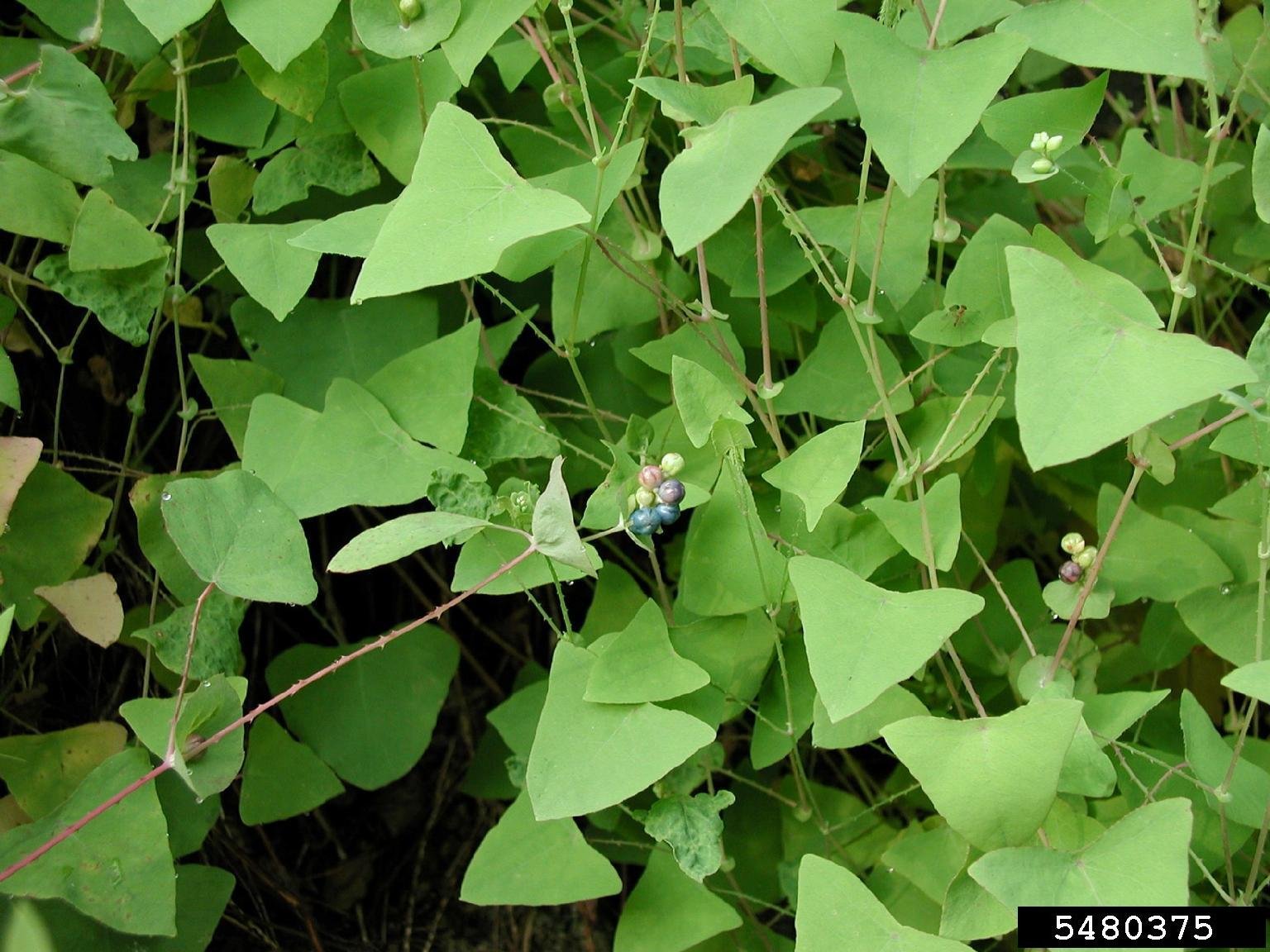
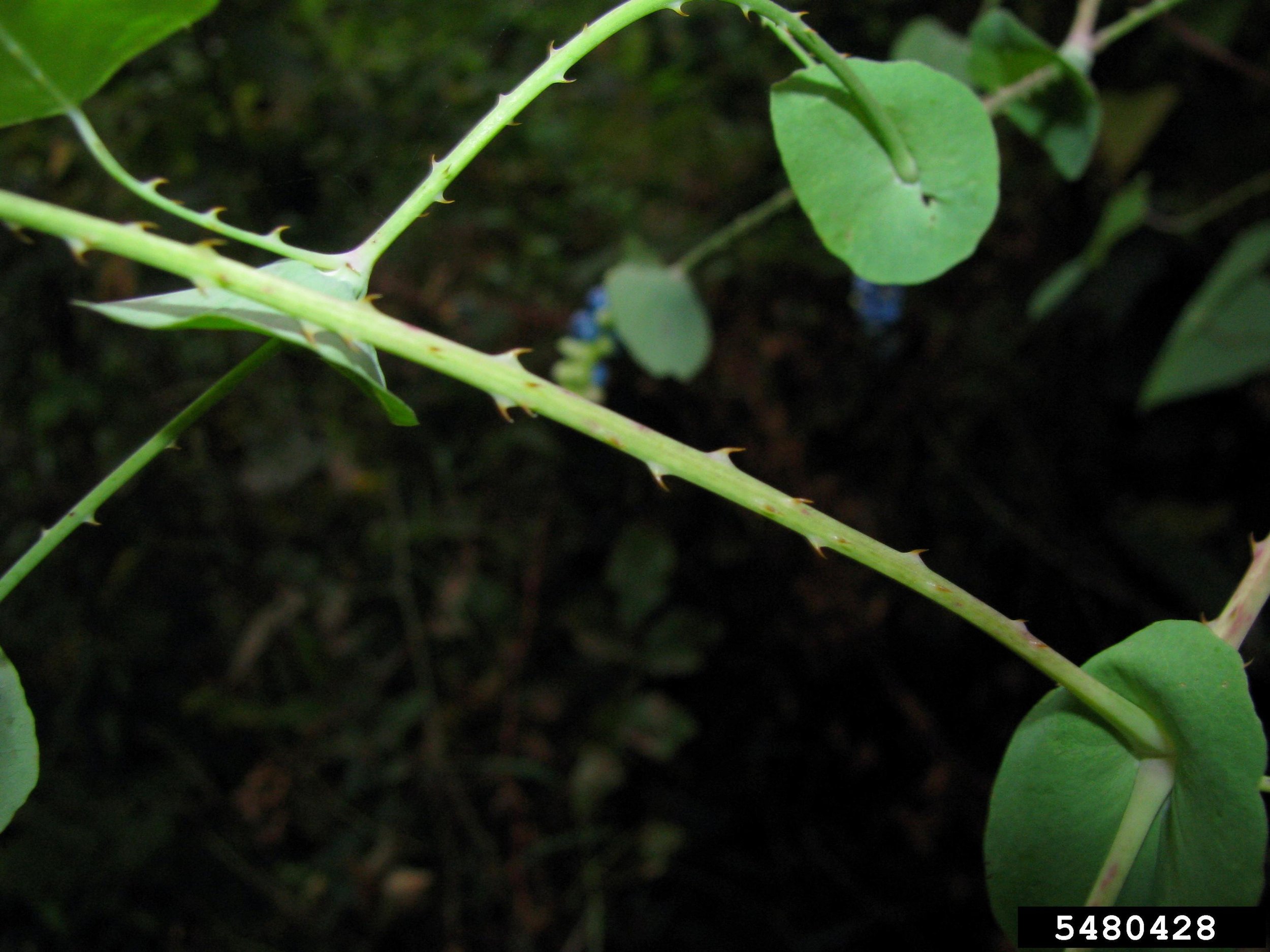
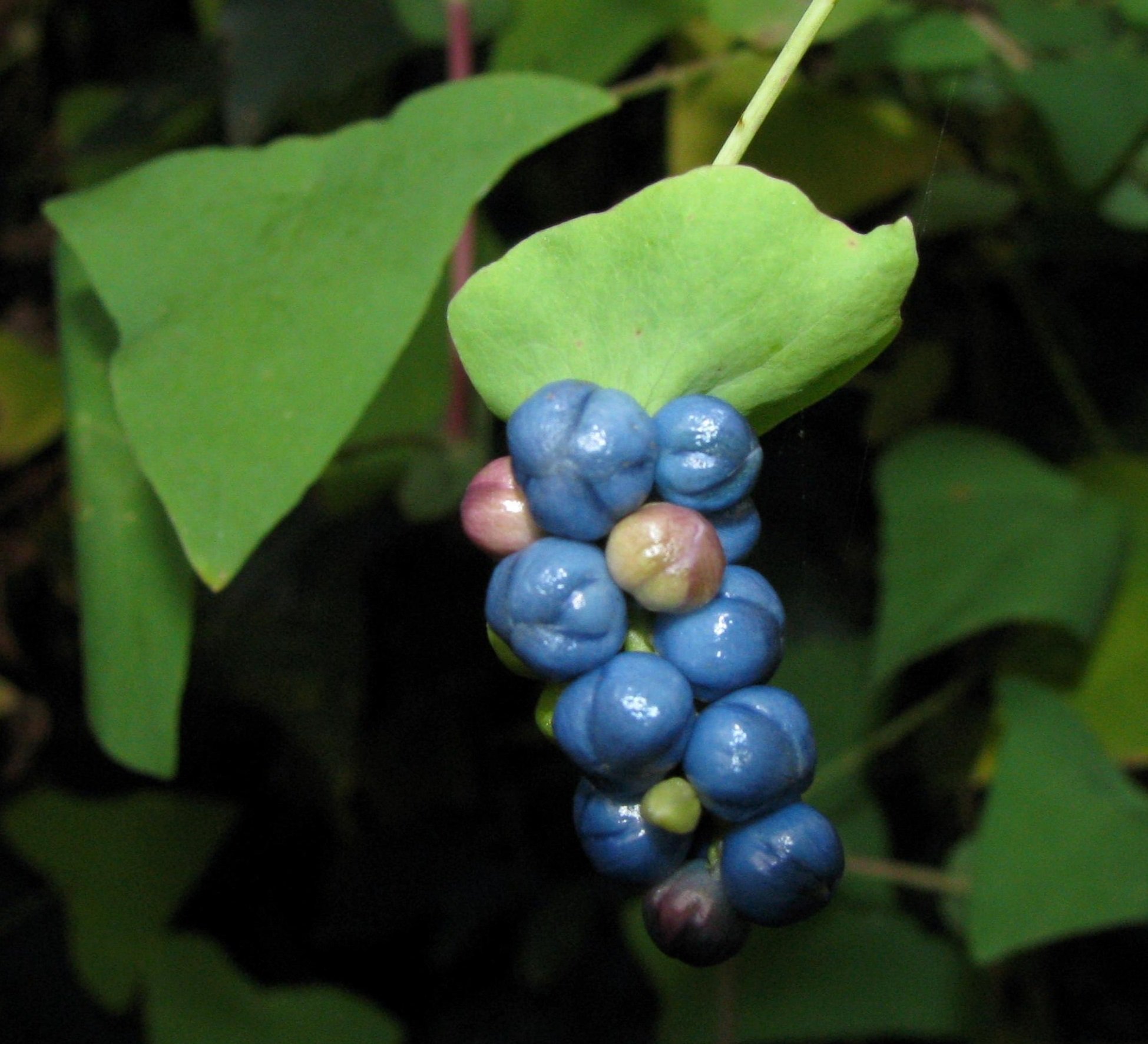
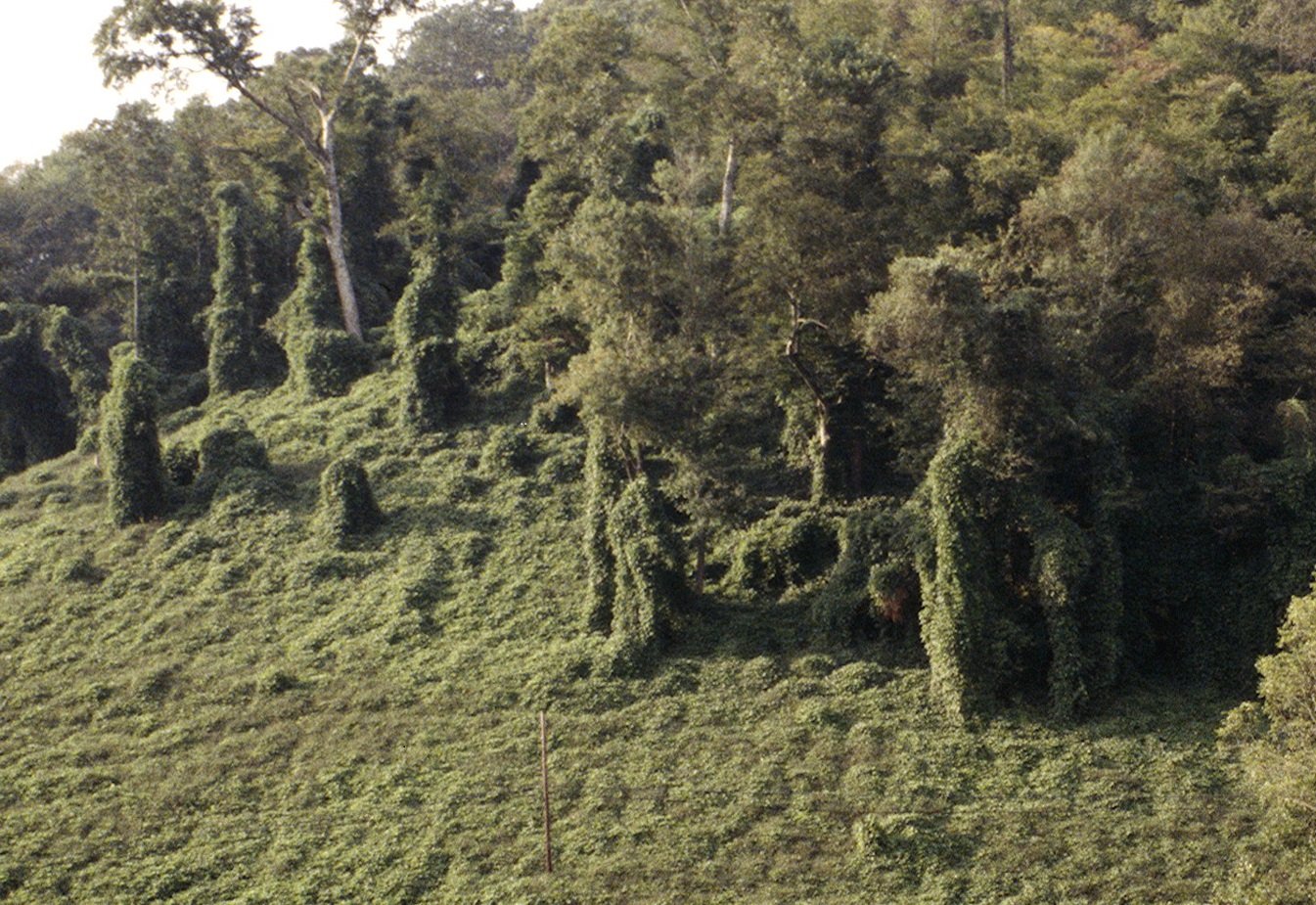

LOOK-A-LIKES: Mile-a-minute vine may be confused with the native arrow-leaved tearthumb or halberd-leaved tearthumb, each of which is similarly armed with recurved barbs along their stems. Arrow-leaved tearthumb leaves are narrower than mile-a-minute. Halberd-leaved tearthumb leaves are, as the name suggests, in the shape of a medieval halberd. Neither of these native tearthumbs have ocreae. Other possible look-a-likes include the bindweeds and climbing false buckwheat, neither of which have recurved barbs along the stems (see photos below for look-a-likes).

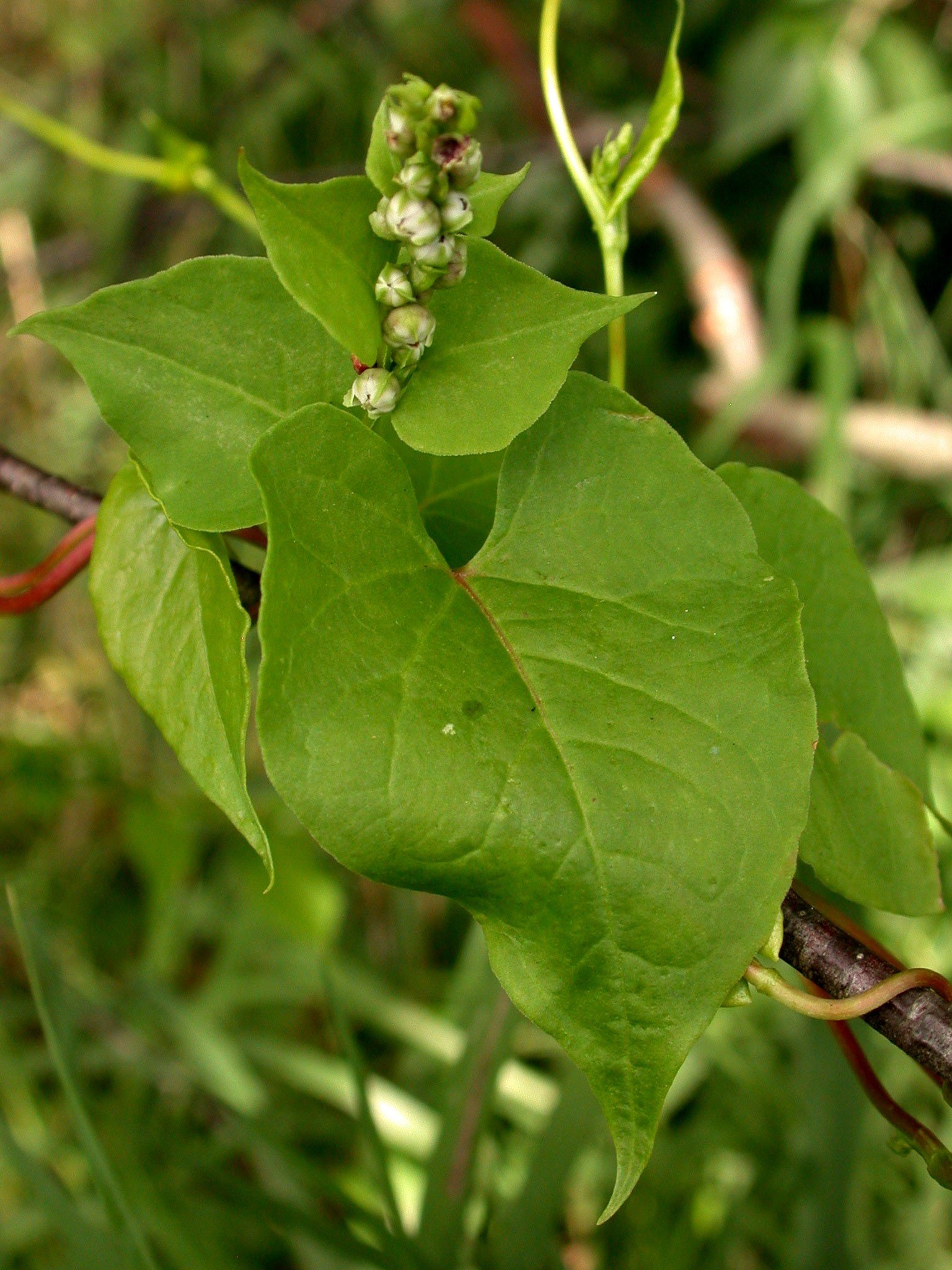
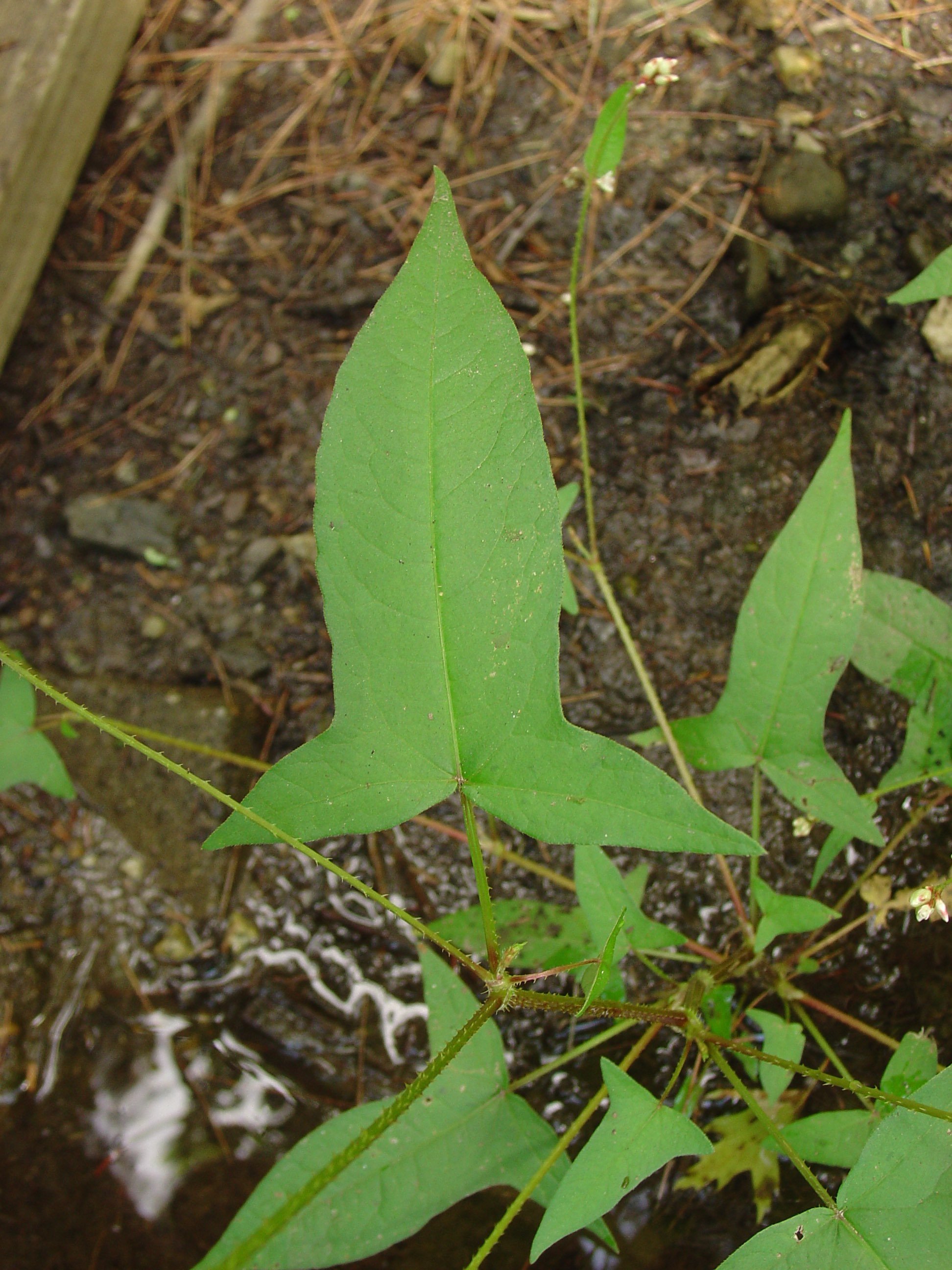
HABITAT & DISTRIBUTION: In its invaded range in North America, it commonly is found growing along roadsides, forest edges, utility rights-of-way, stream banks and in recently logged forests. It prefers moist, rich soil in full sun, but can tolerate partial shade and drier and wetter soils. In its invaded range, mile-a-minute vine has been reported from New Hampshire to northern Virginia and West Virginia, with southcentral Pennsylvania containing significant levels of infestation where it is believed to have first established in North America. The first verified report of mile-a-minute vine in Indiana occurred in one location in Monroe County in 2018. Since then, no new populations have been reported in Indiana. Because it has not yet widely established in Indiana, mile-a-minute vine should be a high-priority species for prevention, early detection, and rapid response efforts.
ECOLOGICAL THREAT: Mile-a-minute’s rapid growth and dense infestations, along with its very early spring germination (March-April), gives this species a very substantial competitive advantage over most native plant species. It easily overwhelms, shades out and displaces many native herbaceous plant species. It can overtop, shade out, weigh down, and even break taller herbaceous plants, woody shrubs, and tree seedlings and saplings. Mile-a-minute infestations reduce plant species diversity and disrupt wildlife habitat. Where timber harvesting occurs, mile-a-minute destroys tree seedlings and saplings, resulting in forest regeneration failures. It quickly overruns utility rights-of-way where herbicides are used to control unwanted woody vegetation. The density of barbed stems and leaves makes movement very difficult for both animals and humans, negatively impacting wildlife use and human recreational use of infested areas. It is a pest in nurseries, orchards, and landscape plantings. It is listed as a noxious weed in seven states, including Ohio.
CONTROL: Preventing mile-a-minute vine from entering Indiana should be a high priority. Efforts should be made to educate natural resource professionals and landowners on Its identification to improve early detection. Where it already occurs, control should be conducted before mile-a-minute begins producing seed in mid- to late June. Existing populations are most effectively controlled with application of pre-emergent herbicides in early spring, followed by application of a post-emergent herbicide to survivors before fruit set in midsummer. Control efforts and monitoring should continue in subsequent years until no mile-a-minute plants remain. Once mile-a-minute is well established in an area, then management efforts should integrate cultural, biological, and chemical control measures, in conjunction with native plant restoration through seeding and planting.
Prevention: Avoid disturbing areas where mile-a-minute is present until it has been eradicated for several years. Mowing, road maintenance and agricultural equipment can inadvertently spread seed. Mow infested areas along roadsides, ditch banks and field edges before seed begins maturing in mid- to late June. Mile-a-minute seed maturation dates may vary from year to year depending on weather patterns. Avoid working or recreating in or walking or driving through infested areas during seed dispersal periods. Clean clothing, shoes, ATVs, or vehicles following activity in infested areas.
Manual – Manual control is feasible only for the occasional plant, small infestations, or sensitive areas where herbicides cannot be used. Hand pulling is easy with protective gloves. If manual control occurs after fruit/seed production, plants containing fruits should be bagged and disposed of. Green fruit may still produce viable seed!
Mechanical – Repeated mowing beginning before fruit set and through the growing season to first frost prevents seed production. Mowing should be done low to the ground, as the remaining stems will send up new sprouts and branches.
Biological – A weevil, Rhinoncomimus latipes, found feeding on mile-a-minute vine in its native range in Asia has been tested as a biological control agent in northeastern North America. Although minor feeding by adult weevils has been observed on other members of the buckwheat (Polygonaceae) family, larvae are only known to feed on mile-a-minute. R. latipes has proved effective in reducing mile-a-minute infestations and seed production, particularly where competing vegetation is already established. It has been approved by USDA-APHIS for release and has been integrated into mile-a-minute management programs in 11 eastern states.
Chemical – Large infestations should first be treated with a pre-emergent herbicide application. Effective pre-emergent herbicides include Pendulum Aquacap (pendimethalin) and Plateau (imazapic). When applied to the ground shortly before mile-a-minute seeds begin to germinate, they prevent the new germinants from growing and emerging from the soil. Application should occur by mid-March in southern Indiana, depending on weather patterns. Applied at the proper rates and time these herbicides will not harm established perennial plants or may have less negative impact on some native annual plants that germinate later in the spring. Pre-emergent herbicide treatments should be followed up with a post-emergent herbicide application in later spring to early summer (by mid-June) to control the mile-a-minute plants missed or not otherwise killed by the pre-emergent herbicide application. Triclopyr (Garlon 3A, Garlon 4, Element 3, Element 4, others) and glyphosate (Roundup, Glyphomax, Glyphomate 41, Glypro, others) both are effective at controlling established mile-a-minute plants. Triclopyr is a broadleaf-specific herbicide and applied at proper rates will not harm grasses and sedges. Glyphosate is a broad-spectrum herbicide and will damage all classes of plants. A non-ionic surfactant should be used to increase herbicide uptake. Mile-a-minute may grow on stream and riverbanks or near open water. Caution must be used to follow label restrictions regarding overspray, drift or movement of herbicide into surface waters. Only herbicides and surfactants with an aquatic use label should be applied in these circumstances. Accord, Rodeo, Aquaneat (i.e., glyphosate products) and Garlon 3A and Element 3A (i.e., triclopyr products) are labeled for use in or near aquatic areas.
To report an invasive species that is invading natural areas, use Early Detection and Distribution Mapping System (EDDMapS): https://www.eddmaps.org/report/
IMPORTANT: The pesticide label is the law! When using any chemical control, always read the entire pesticide label carefully, follow all mixing and application instructions and use all personal protective gear and clothing specified. Contact the Office of Indiana State Chemist (OISC) for additional pesticide use requirements, restrictions, or recommendations. SICIM does not endorse any specific pesticide brand.
ADDITIONAL INFORMATION:
Purdue University Extension Invasive Plant Series: https://www.extension.purdue.edu/extmedia/fnr/fnr-481-w.pdf
Invasive.org: http://www.invasive.org/browse/subinfo.cfm?sub=3065
Penn State Invasive Plant Species Management: https://extension.psu.edu/mile-a-minute
EDDMapS: https://www.eddmaps.org/species/subject.cfm?sub=3065
USDA Weed of the Week: https://www.invasive.org/weedcd/pdfs/wow/mile-a-minute_weed.pdf
LOOK-A-LIKE REFERENCES:
https://www.minnesotawildflowers.info/flower/arrow-leaved-tearthumb
https://www.minnesotawildflowers.info/flower/halberd-leaved-tearthumb
https://www.minnesotawildflowers.info/flower/climbing-false-buckwheat
REFERENCES:
Hough-Goldstein, J., E. Lake and R. Reardon. 2012. Status of an ongoing biological control program for the invasive vine Persicaria perfoliata in eastern North America. BioControl 57:181-189.
Kumar, V. and A. DiTommaso. 2005. Mile-a-minute (Polygonum perfoliatum): an increasingly problematic invasive species. Weed Technology 19:1071-1077.
McCormick, L.H. and N.L. Hartwig. 1995. Control of noxious weed mile-a-minute (Polygonum perfoliatum L.) in reforestation. Northern Journal of Applied Forestry 12:127-132.
Stanosz, G. and W. Jackson. 1991. Mile-a-minute weed. Pest Alert NA-PR-04-91. Morgantown, WV: U.S. Dept. of Agriculture, Forest Service, Northeastern Area.